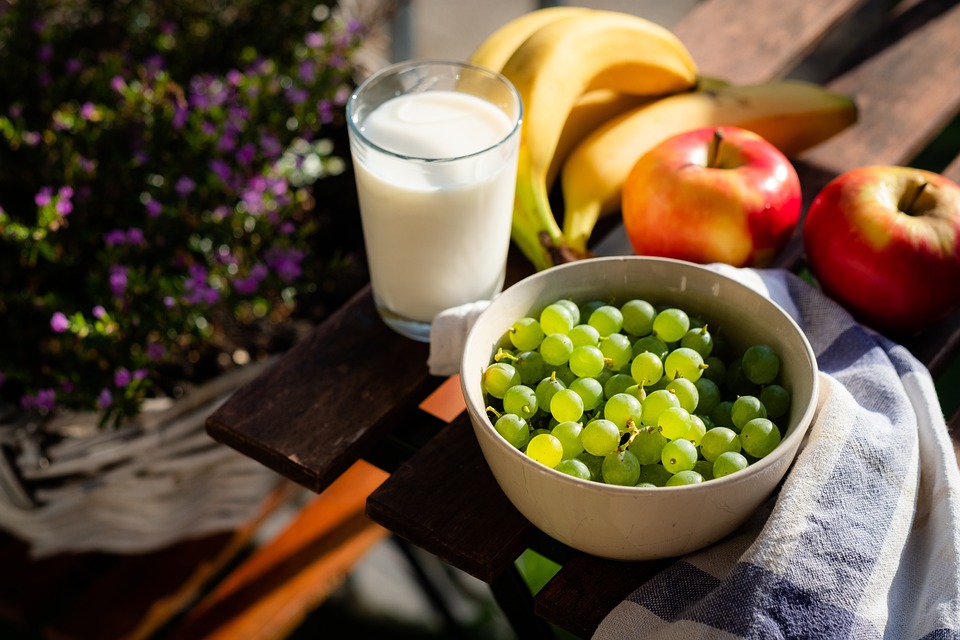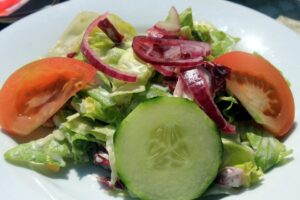There isn’t a single best meal for weight loss. It is better to start by avoiding processed food and eating whole grain foods. Carbohydrates, sweets, and rice are all responsible for weight gain. You should follow a weight loss chart to eat only foods that will not add more calories to your body.
Indian Diet Plan For Weight Loss For Men
Plant-Based Diet
To lose weight, men should adopt a WFPB diet (whole food plant-based). WFPB does not include any animal products, and is therefore different from vegan food. Indian foods for weight loss include animal products such as eggs, chickens, fish, cheese and yogurt. This diet is high in fibre and will protect you against heart disease.
Low-Carb Diet
Visceral fat is more common in men than women. Low-carbohydrate diets can help with weight loss. Men can benefit from any diet that helps them lose body fat. Men are advised to follow a low carb diet that includes meat, vegetables, fruits and nuts.
High Protein Diet
The macronutrient protein is the most filling, so including it in your Indian weight loss diet chart can keep you satisfied for a longer period of time. This high-protein meal plan includes lentils, tofu, fish, chicken and eggs. You can customize your protein-rich diet by choosing from a variety of plant and animal options.
Indian Diet Plan to Lose Weight for Women
Mediterranean Diet
Women who do not want to be restricted in their diet can lose weight with this diet. The Mediterranean diet is a healthy diet that includes fruit, vegetables, nuts, and whole grains. This Indian weight loss diet chart does not allow processed food, refined grains, or sweet drinks.
Low-Carb Diet
You can opt for a low carb diet if you like to follow a diet that is structured and has clear guidelines. This diet should be avoided if you are pregnant or have a medical condition. Low-carbohydrate diets will help to regulate your menstrual cycle and improve hormone levels. This diet plan is better at reducing weight in the short term than low-fat dieting.
A low-carbohydrate diet will usually be rich in vegetables and protein. You must include fruits, vegetables, such as broccoli, cauliflower and oranges, along with nuts, like almonds, walnuts and chia seeds.
Diet
Another effective diet for weight loss. The DASH Diet encourages women to eat vegetables, whole grains and fruits and avoid foods high in sugar and salt. To reduce excess stomach fat or obesity, the DASH diet is a great way to achieve results.
Anyone can follow the Indian weight loss diet plan. It is best to consult with your doctor prior to starting any diet.
Weight Loss Diet Plan Chart – (Day Wise)
A diet plan that is low in carbohydrates and high in fibre must be followed. This diet plan aims to limit your weekly intake to fruit and vegetables. Non-vegetarians will get their protein by eating brown rice, and vegetarians from chicken. This diet plan will help you to lose weight in a significant way. Consult your doctor before implementing this diet.
This is a day-by-day weight loss diet chart.
Day 1
You should eat as much fruit as you can on the first day. Watermelon and muskmelon are rich in fibre, so it is best to eat more of them. Oranges, papayas and apples are also good options.
Drink 8-12 glasses water a day and don’t let yourself get hungry. Grab some fruit whenever you feel hungry. Fruits are low in fat and rich in fibre, so they satisfy hunger without adding calories.
Time Meal
8:00 AM – 1 medium size apple
10:00 AM – Sliced muskmelon in a half bowl
12:2:30 PM – Watermelon (1 bowl)
4:00 PM – Mosambi or orange?
6:30 PM – Salad of 1 cup muskmelon and pomegranate.
9:00 PM – Watermelon, 1/2 cup
Day 2
You ate fruits on day 1, now it’s your turn to eat veggies. Cooking with oil can be high in calories. If you want to add more flavor, you can use butter or olive oil. Avoid eating potatoes in their fried or chipped form. Vegetables are a good choice if you’re hungry any time during the day.
Time Meal
8:00 AM – Boil potatoes (1 cup).
10:00 AM – Cucumber (1/2 Bowl)
12:2:30 PM – Lettuce and cucumber (1 cup each), spinach, and capsicum
4:00 PM – Sliced carrots with lemon juice (1/2 cup) and a pinch salt
6:30 PM – Green peas and broccoli boiled together (1 cup).
9:00 PM – 1 cucumber
Day 3
You must have both fruits and vegetables on the third day. The fruits and vegetables that you consumed in the first 2 days can be kept. It would be best to avoid bananas and potato.
Your body will begin to adapt to this diet after the third day. Fruits will add a new dimension to your diet after you have eaten vegetables all day.
Time Meal
8:00 AM – Muskmelon (1/2 bowl)
10:00 AM – Pineapple or pear (one cup)
12:2:30 PM – Lettuce and cucumber (1 cup each), spinach, and capsicum
4:00 PM – Sliced carrots with lemon juice (1/2 cup) and a pinch salt
6:30 PM – Green peas and broccoli (1 cup).
9:00 PM – 1 cucumber
Day 4
Pectin is found in bananas and helps with digestion. Bananas also provide instant energy to keep you going all day. You can now eat up to eight bananas a day.
Divide the milk consumption between your meals and snacks. You can drink one glass of dairy for breakfast, lunch and dinner. You can substitute milk with soup.
Time Meal
8:00 AM – 2 bananas
10:00 AM – 1 banana
12:2:30 PM – A milkshake made with 2 bananas and cocoa powder.
4:00 PM – 2 bananas
6:30 PM – One banana and one glass of milk
9:00 PM – One glass of milk
Day 5
You can have a bowl or brown rice on this day. You can have a bowl or brown rice as your lunch if you’re a vegetarian. Just make sure to cook it with the least amount of oil. If you’re not a vegetarian, opt for a lean protein like skinless chicken or breasts of fish.
Time Meal
8:00 AM – 3 tomatoes
10:00 AM – Assorted vegetables sauteed with brown rice (1/2 cup).
12:2:30 PM – 2 tomatoes
4:00 PM – Brown rice (one bowl)
6:30 PM – One tomato per 1/2 cup sauteed vegetables
9:00 PM – A bowl of tomatoe soup with some salt and pepper
Day 6
On the sixth day, you can add uncooked or cooked veggies to the salad. You must consume boiled or steam vegetables and your salad needs to be well dressed. Mixing vegetables will give your body the fibre it needs. Avoid sweet potatoes, fruit, and potatoes. Skinless 500g of chicken can be eaten with vegetables, except tomatoes, by non-vegetarians.
Time Meal
8:00 AM – 3 tomatoes
10:00 AM – Assorted vegetables sauteed with brown rice (1/2 cup).
12:2:30 PM – 2 tomatoes
4:00 PM – Brown rice (one bowl)
6:30 PM – One tomato per 1/2 cup sauteed vegetables
9:00 PM – A bowl of tomatoe soup with some salt and pepper
Day 7
On the last day, you can have brown rice and boiled vegetables as your lunch. You can drink sugarless fruit-juice after every meal to hydrate your body and complement the nutrient rich vegetables. You will have the energy you need with the rice and vegetables. This will allow your body to work properly. The fruit juices will also help flush out toxins. Sweet potatoes and potatoes should be avoided.
Time Meal
9:00 AM – Orange or apple juice
12:2:30 PM – Half cup of sauteed vegetables with half cup brown rice
4:00 PM – Watermelon (one cup) and a few berries
6:30 PM – 1 cup soup
9:00 PM – Half cup of brown rice and 1/2 cup sauteed vegetables
Conclusion
This diet chart for weight loss encourages you to consume more vegetables and fruit with low calories. Avoid processed foods and sugar. Avoid foods that contain refined carbohydrates. This healthy weight loss diet chart can help you lose unwanted body weight. It is best to consult with your doctor first before attempting any diet plan. Everybody’s body is unique and they can provide the most appropriate advice regarding Indian foods for weight loss.
The Indian Diet Chart for Weight Loss for Females is almost the same for males and females, but males require more protein for a balanced meal. If you have an allergy to a particular food while on the diet, your doctor may suggest a food intolerance testing.


